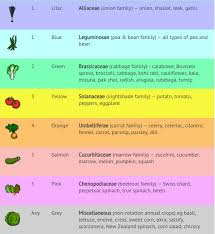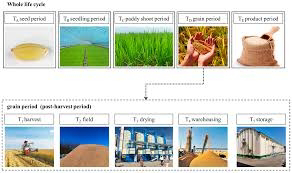Crop Prep 6 Months
Planning ahead for your crop is a wise decision. The specific steps and considerations will depend on the type of crop you are referring to and the specific conditions of your location. However, here are some general guidelines to help you prepare for your upcoming crop:
Determine the crop type: Identify the specific crop you plan to grow. Consider factors such as market demand, suitability to your climate, and your personal preferences.
Research crop requirements: Learn about the specific requirements of your chosen crop, including soil type, sunlight, water, and temperature needs. This will help you create optimal growing conditions.
Prepare the soil: Assess the quality of your soil and make any necessary improvements. Conduct a soil test to determine its pH level and nutrient content. Adjust the pH if needed and add organic matter or fertilizers to ensure a nutrient-rich environment.
Plan irrigation: Evaluate your water sources and plan for an irrigation system if necessary. Determine the water requirements of your crop and ensure you have a reliable water supply for the next six months.
Purchase seeds or seedlings: Select high-quality seeds or seedlings from reputable sources. Consider factors such as disease resistance, yield potential, and suitability to your climate. Purchase them well in advance to allow time for germination or growth before planting.
Develop a planting schedule: Consult local agricultural extension services or use online resources to determine the optimal planting time for your crop in your region. Consider factors such as frost dates, temperature fluctuations, and potential pest problems.
Prepare planting beds: Clear the designated area of weeds, rocks, and debris. If necessary, till or loosen the soil to create a suitable seedbed for planting.
Plan for pest and weed control: Identify potential pests and weeds that may affect your crop. Develop a pest management plan, which may include organic or chemical solutions, crop rotation, or companion planting to minimize damage.
Consider crop rotation and companion planting: If applicable to your crop, plan for crop rotation to improve soil health and reduce pest and disease pressure. Additionally, explore companion planting techniques to enhance the overall health and yield of your crop.
Stay updated and adapt: Keep an eye on weather forecasts, local conditions, and any new information or techniques related to your crop. Be prepared to adapt your plans and strategies as needed throughout the growing season.
Secure necessary permits: Depending on your location and the type of crop you're growing, you may need to obtain permits or comply with specific regulations. Research local agricultural laws and regulations to ensure compliance and obtain any necessary permits or licenses.
Assess equipment and tools: Evaluate your farming equipment and tools to ensure they are in good working condition. Make any necessary repairs or replacements in advance, so you're well-prepared when it's time to till the soil, plant, irrigate, and harvest.
Develop a fertilization plan: Determine the fertilization requirements of your crop and create a fertilization schedule. Consider using organic fertilizers or compost to enhance soil fertility and minimize environmental impact.
Implement a pest scouting routine: Regularly monitor your crops for signs of pests or diseases. Establish a schedule for scouting your fields and develop strategies for early detection and control. Integrated Pest Management (IPM) techniques, which prioritize environmentally friendly approaches, can be beneficial.
Consider crop protection measures: If necessary, plan for protective measures such as fencing, netting, or row covers to safeguard your crop from wildlife, birds, or extreme weather events.
Arrange for labor and assistance: Determine if you'll need additional labor to manage your crop. Make arrangements for hiring workers or seek assistance from friends, family, or volunteers. Distribute tasks and establish a clear workflow to ensure efficient operations.
Develop a harvesting and post-harvest plan: Research the optimal time for harvesting your crop and plan for efficient harvesting methods. Additionally, consider post-harvest activities such as cleaning, grading, packaging, and storage to preserve the quality of your produce.
Keep records: Maintain detailed records of your crop management activities, including planting dates, fertilization schedules, pest control measures, and harvest yields. These records can provide valuable insights for future seasons and help track your progress.
Explore marketing and sales options: Consider your marketing and sales strategy for your crop. Research local markets, restaurants, grocery stores, or community-supported agriculture (CSA) programs where you can sell your produce. Explore online platforms and social media to reach potential customers directly.
Stay updated on agricultural practices: Continuously educate yourself on new agricultural practices, techniques, and technologies relevant to your crop. Attend workshops, conferences, or webinars, and connect with other farmers to exchange knowledge and experiences.
Remember, successful crop cultivation requires ongoing care, monitoring, and adjustment. Stay attentive to the needs of your plants, adapt your practices based on feedback and results, and remain resilient in the face of challenges. Happy farming!
Follow me more details
Click on the link 🔗🖇️👇👇






















Comments
Post a Comment